
Majorstuen: The Heartbeat of Oslo's Urban Charm
Explore Majorstuen in Oslo: A perfect blend of urban charm and cultural richness, offering high-end shopping, delightful cafes, and scenic parks in the heart of Norway's capital.
Majorstuen, located just west of Oslo's bustling city center, is a vibrant and dynamic neighborhood that offers a perfect mix of modern urban life and rich cultural experiences. As you stroll through its lively streets, you'll find a delightful array of cafes, restaurants, and boutiques, each offering a unique taste of Norwegian hospitality and craftsmanship. One of Majorstuen’s highlights is the famous Bogstadveien street, known for its high-end shopping and trendy fashion stores. Whether you're in search of the latest Scandinavian designs or just window shopping, this area promises a day well spent. The neighborhood is also home to several green spaces, including the serene Frogner Park, which features the iconic Vigeland Sculpture Park, a must-visit for art enthusiasts. For history buffs and culture seekers, Majorstuen offers several museums and galleries, including the Oslo City Museum, where you can delve into the city's rich past. The area is also a hub for public transport, making it an excellent base for exploring the rest of Oslo. With its blend of modern amenities and cultural treasures, Majorstuen stands out as a must-visit destination for any traveler.
Local tips in Majorstuen
- Visit Bogstadveien for the best shopping experience in Oslo.
- Don't miss the Vigeland Sculpture Park in Frogner Park for an artful escape.
- Utilize the excellent public transport options to explore other parts of Oslo.
- Try local Norwegian cuisine at one of Majorstuen's many eateries.
- Visit the Oslo City Museum to learn about the city's history.
Majorstuen: The Heartbeat of Oslo's Urban Charm
Majorstuen, located just west of Oslo's bustling city center, is a vibrant and dynamic neighborhood that offers a perfect mix of modern urban life and rich cultural experiences. As you stroll through its lively streets, you'll find a delightful array of cafes, restaurants, and boutiques, each offering a unique taste of Norwegian hospitality and craftsmanship. One of Majorstuen’s highlights is the famous Bogstadveien street, known for its high-end shopping and trendy fashion stores. Whether you're in search of the latest Scandinavian designs or just window shopping, this area promises a day well spent. The neighborhood is also home to several green spaces, including the serene Frogner Park, which features the iconic Vigeland Sculpture Park, a must-visit for art enthusiasts. For history buffs and culture seekers, Majorstuen offers several museums and galleries, including the Oslo City Museum, where you can delve into the city's rich past. The area is also a hub for public transport, making it an excellent base for exploring the rest of Oslo. With its blend of modern amenities and cultural treasures, Majorstuen stands out as a must-visit destination for any traveler.
Iconic landmarks you can’t miss
Frognerparken
Discover the beauty of Frognerparken, Oslo's largest park, featuring stunning sculptures, lush gardens, and a vibrant atmosphere for all visitors.

The Vigeland Park
Experience the enchantment of Vigeland Park, Oslo's iconic sculpture park showcasing over 200 stunning works by Gustav Vigeland amidst lush landscapes.

Valkyrie plass
Explore Valkyrie Plass, Oslo's serene city park, where lush gardens and peaceful pathways create the perfect retreat from urban life.
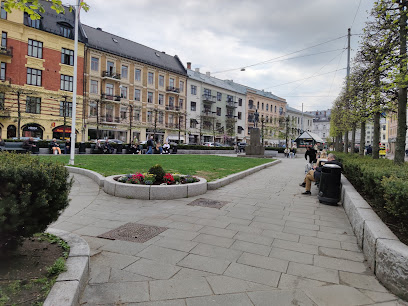
Langaardsløkken
Explore Langaardslokken, a serene park in Oslo perfect for relaxation, picnics, and nature walks amidst lush greenery.

Josefines park
Experience tranquility and artistic beauty at Josefines Park, a serene green oasis in the heart of Oslo, perfect for relaxation and exploration.

Ruth Maier Statue
Explore the Ruth Maier Statue in Oslo, a powerful historical landmark honoring the resilience of the human spirit during World War II.

Gyldenløveparken
Explore the serene beauty and vibrant community spirit of Gyldenløveparken, a tranquil park in Oslo's Majorstuen district perfect for relaxation and leisure.

Middelthun Passage
Experience the serene beauty of Middelthun Passage, a tranquil city park in Oslo perfect for relaxation, picnics, and cultural events.

Vigeland Sculpture Park
Discover the breathtaking Vigeland Sculpture Park in Oslo, where art and nature blend seamlessly in a unique open-air gallery.

Namo Amitabha Buddha
Discover the tranquility of Namo Amitabha Buddha, a serene religious site in Oslo perfect for reflection and cultural immersion.

Unmissable attractions to see
The Vigeland Park
Explore the breathtaking Vigeland Park in Oslo, an open-air museum filled with over 200 stunning sculptures celebrating human emotions and relationships.

Akershus Fortress
Explore the rich history and stunning views at Akershus Fortress, a captivating landmark in the heart of Oslo, Norway.

The Norwegian Museum of Cultural History
Explore Norway's vibrant culture and history at the Norwegian Museum of Cultural History, featuring indoor and outdoor exhibits, traditional artifacts, and engaging experiences.

Kon-Tiki Museum
Explore the Kon-Tiki Museum in Oslo, home to Thor Heyerdahl's legendary voyages and a treasure trove of maritime history and adventure.

Slottsplassen
Explore Slottsplassen, the majestic public square in Oslo, featuring the Royal Palace and stunning gardens, perfect for history lovers and leisure seekers.

The Vigeland Museum
Explore the Vigeland Museum in Oslo, where art meets humanity through the breathtaking sculptures of Gustav Vigeland.

Oslo City Museum (Oslo Bymuseum)
Explore Oslo's vibrant history and culture at the Oslo City Museum, surrounded by beautiful landscapes and rich artistic heritage.

Gustav Vigeland Statue
Explore the emotion and artistry of the Vigeland Statue in Oslo's stunning Vigeland Park, a treasure of human expression and creativity.

The Skating Museum
Discover the rich history of ice skating at The Skating Museum in Oslo, where artifacts and stories bring Norway's winter sport legacy to life.

Essential places to dine
Kverneriet Majorstuen
Discover Kverneriet Majorstuen: Oslo's premier destination for gourmet burgers and cocktails in a vibrant setting.

Villa Paradiso Majorstuen
Experience authentic Italian flavors at Villa Paradiso Majorstuen – where wood-fired pizzas and delightful pastas await you in Oslo.

Larsen Restaurant
Savor traditional Norwegian dishes in a cozy setting at Larsen Restaurant – where authentic flavors meet warm hospitality.

Delicatessen Majorstuen
Experience authentic Spanish cuisine at Delicatessen Majorstuen with delicious tapas and an inviting atmosphere in Oslo.

1947 GANDHI indisk restaurant
Discover modern Indian cuisine at 1947 GANDHI in Oslo – where tradition meets innovation for an unforgettable dining experience.

Mistral Restaurant
Discover Mistral Restaurant in Oslo: A Culinary Delight Blending Local Ingredients with Global Flavors for an Unforgettable Dining Experience.

Cru Vin & Kjøkken
Experience gourmet cuisine and an extensive wine selection at Cru Vin & Kjøkken in Oslo's Majorstuen district.
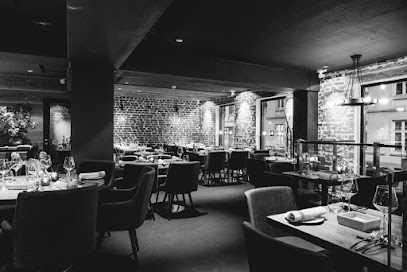
À L’aise
Discover the culinary excellence of À L’aise in Oslo - where innovation meets tradition in a sophisticated dining atmosphere.
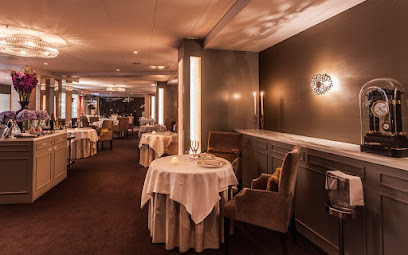
Der Peppern Gror Bogstadveien
Discover authentic Indian flavors at Der Peppern Gror in Oslo's Majorstuen neighborhood - a must-visit culinary destination!
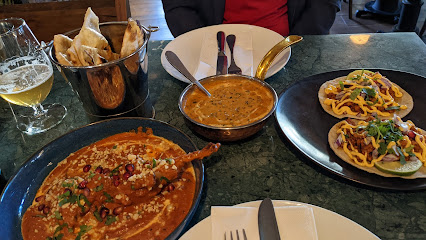
Maximus Trattoria Restaurant Oslo
Experience authentic Italian cuisine at Maximus Trattoria in Oslo—home to delicious pizzas and traditional dishes served with warmth.

Markets, malls and hidden boutiques
Søstrene Grene
Explore the artistic charm of Søstrene Grene in Oslo, where creativity flourishes with unique art supplies, home decor, and more.

Flying Tiger Copenhagen
Explore the quirky and affordable gifts at Flying Tiger Copenhagen, a must-visit shop in Oslo filled with unique treasures for every traveler.

Ditto
Explore Oslo's unique vintage clothing store, Ditto, where every piece has a story and sustainability meets style.

& Other Stories
Explore the latest women's fashion trends at & Other Stories in Oslo, where style meets quality in a modern shopping experience.

Ma Vintage AS
Explore a curated selection of vintage clothing at Ma Vintage AS in Oslo, where unique finds and sustainable fashion come together.

Repertoire
Discover unique vintage clothing and accessories at Repertoire, Oslo's premier second-hand store in the heart of Majorstuen.

Wolford Boutique Oslo
Explore luxury lingerie and sophisticated women's fashion at Wolford Boutique Oslo, a must-visit destination for style-savvy tourists.

Aurora Verksted Butikk
Explore Aurora Verksted Butikk in Oslo for unique handmade clothing, pottery, and crafts, reflecting Norway's rich artistic heritage.

EVE Concept Store Bogstadveien
Discover unique gifts and stylish accessories at EVE Concept Store in Oslo's vibrant Majorstuen district, where fashion meets charm.

The Feelgood Shop
Shop for unique Norwegian souvenirs at The Feelgood Shop in Oslo's Majorstuen, where local craftsmanship meets a warm atmosphere.

Essential bars & hidden hideouts
Den Gamle Major
Experience the heart of Oslo’s culinary scene at Den Gamle Major – a top-rated gastropub offering delicious local dishes and a vibrant bar atmosphere.

Oslo Mikrobryggeri
Experience the best of Oslo's craft beer culture at Oslo Mikrobryggeri, a lively brewpub with a diverse selection of local brews and delicious food.

The Broker
Experience the taste of Norway at The Broker, a trendy bar and restaurant in Oslo's Majorstuen district, offering cocktails and delightful brasserie fare.

The Highbury Pub
Discover the charm of The Highbury Pub in Majorstuen, where local brews meet a cozy atmosphere in the heart of Oslo.

The Old Irish Pub - Majorstuen
Discover the charm of The Old Irish Pub in Majorstuen, Oslo - where Irish hospitality meets Norwegian warmth.
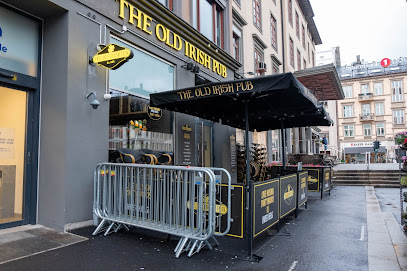
The Pub
Experience Oslo's nightlife at The Pub, where expertly crafted cocktails and a lively atmosphere await you in the heart of the city.

Perrongen Drift
Experience the lively spirit of Oslo at Perrongen Drift, a welcoming pub offering a vast selection of beverages and engaging atmosphere.

Ophelia Bar Diner Club
Experience the perfect blend of dining and nightlife at Ophelia Bar Diner Club in Oslo, where every night is a celebration of flavors and fun.

Mabou
Discover Mabou: The Heart of Oslo's Nightlife with Great Promotions and a Lively Atmosphere.

Lille Chef
Experience the heart of Oslo at Lille Chef pub, where local culture meets a cozy ambiance for the perfect evening out.

Local Phrases
-
- HelloHei
[hay] - GoodbyeHa det
[hah deh] - YesJa
[yah] - NoNei
[nay] - Please/You're welcomeVær så god
[ver so goh] - Thank youTakk
[tahk] - Excuse me/SorryUnnskyld
[oon-shoold] - How are you?Hvordan har du det?
[vor-dan har doo deh] - Fine. And you?Bra. Og du?
[bra oh doo] - Do you speak English?Snakker du engelsk?
[snak-ker doo engelsk] - I don't understandJeg forstår ikke
[yeh for-stor eek-keh]
- HelloHei
-
- I'd like to see the menu, pleaseJeg vil gjerne se menyen, takk
[yeh vil yern-eh seh men-yen, tahk] - I don't eat meatJeg spiser ikke kjøtt
[yeh spee-ser eek-keh khyut] - Cheers!Skål!
[skohl] - I would like to pay, pleaseJeg vil gjerne betale, takk
[yeh vil yern-eh beh-tah-leh, tahk]
- I'd like to see the menu, pleaseJeg vil gjerne se menyen, takk
-
- Help!Hjelp!
[yelp] - Go away!Gå bort!
[goh burt] - Call the Police!Ring politiet!
[ring poh-lee-tee-eh] - Call a doctor!Ring en lege!
[ring en leh-geh] - I'm lostJeg er borte
[yeh er bor-teh] - I'm illJeg er syk
[yeh er sook]
- Help!Hjelp!
-
- I'd like to buy...Jeg vil kjøpe...
[yeh vil shoh-peh] - I'm just lookingJeg bare ser
[yeh bah-reh sair] - How much is it?Hvor mye koster det?
[vor mee-yeh kus-ter deh] - That's too expensiveDet er for dyrt
[deh er for deer-t] - Can you lower the price?Kan du senke prisen?
[kan doo sen-keh pree-sen]
- I'd like to buy...Jeg vil kjøpe...
-
- What time is it?Hva er klokka?
[vah er klok-ka] - It's one o'clockKlokken er ett
[klok-ken er et] - Half past (10)Halv ti
[halv tee] - MorningMorgen
[mor-gen] - AfternoonEttermiddag
[et-ter-mee-dag] - EveningKveld
[kvehld] - YesterdayI går
[ee gor] - TodayI dag
[ee dahg] - TomorrowI morgen
[ee mor-gen] - 1En
[en] - 2To
[too] - 3Tre
[treh] - 4Fire
[fee-reh] - 5Fem
[fem] - 6Seks
[sehks] - 7Syv
[siv] - 8Åtte
[ot-teh] - 9Ni
[nee] - 10Ti
[tee]
- What time is it?Hva er klokka?
-
- Where's a/the...?Hvor er...
[vor er] - What's the address?Hva er adressen?
[vah er ah-dres-sen] - Can you show me (on the map)?Kan du vise meg (på kartet)?
[kan doo vee-seh may (poh kar-teh)] - When's the next (bus)?Når går neste (buss)?
[nar gor nest-eh (booss)] - A ticket (to ....)En billett (til ....)
[en bee-let (teel)]
- Where's a/the...?Hvor er...
History of Majorstuen
-
Majorstuen's history can be traced back to the 19th century when it was primarily agrarian land. The area consisted of farms and open fields, with the name 'Majorstuen' deriving from a local estate. As Oslo expanded, the neighborhood began to transition from agriculture to urban development.
-
The late 19th century marked a significant turning point for Majorstuen with the introduction of the tram network in 1898. This innovation connected Majorstuen to the city center and facilitated urban growth, leading to the construction of residential buildings and businesses, transforming it into a vibrant urban area.
-
During the early 1900s, Majorstuen became a showcase for architectural styles, including Jugendstil (Art Nouveau) and functionalism. Notable buildings from this period include the iconic Majorstuen Church, completed in 1911, which reflects the neighborhood's growing prominence as a residential district.
-
In the 1950s and 1960s, Majorstuen evolved into a cultural hub, characterized by vibrant shopping streets such as Bogstadveien. This area became known for its mix of upscale boutiques, cafes, and cultural institutions, reflecting the changing lifestyle and economic growth of Oslo post-World War II.
-
Today, Majorstuen is recognized for its diverse community, blending historical architecture with modern amenities. The neighborhood hosts various cultural events and festivals, reinforcing its identity as a lively and inclusive part of Oslo, while maintaining connections to its rich historical roots.
Majorstuen Essentials
-
Majorstuen is easily accessible from various neighborhoods in Oslo. You can take the T-bane (metro) line 1, 2, or 3 to Majorstuen Station, which is centrally located. Additionally, several bus lines connect Majorstuen to other parts of the city, including lines 20, 21, and 22. If you're coming from the Oslo Central Station, a direct T-bane ride takes about 10 minutes. Taxis are also available and can provide a convenient way to reach Majorstuen.
-
Majorstuen is well-serviced by public transport, making it easy to explore. The T-bane and buses are the most efficient means of transport. You can also rent bicycles through the city's bike-sharing program, which has stations throughout the area. Many attractions are within walking distance, so consider exploring on foot to enjoy the neighborhood's charm.
-
Majorstuen is generally a safe neighborhood for tourists. However, as in any urban area, you should remain vigilant. Avoid poorly lit streets at night and be cautious of your belongings in crowded places. While there are no specific areas with high crime rates targeting tourists, it’s advisable to stay alert, especially in busy areas like shopping streets.
-
In case of an emergency in Majorstuen, dial 112 for police, 113 for medical emergencies, and 110 for fire services. Local hospitals and clinics are available for medical care. It is also advisable to have travel insurance that covers emergencies. Pharmacies can be found throughout Majorstuen for non-emergency health issues.
-
Fashion: Do dress comfortably and casually, as Norwegians tend to favor practicality. Don't wear overly formal attire unless the occasion calls for it. Religion: Do respect local customs, especially in religious sites. Public Transport: Do validate your ticket before boarding and be courteous to fellow passengers. Don't speak loudly or eat on public transport. Greetings: Do greet people with a friendly smile and a nod. A handshake is common in formal settings. Eating & Drinking: Do try local fare at cafes and restaurants. Don’t waste food, as it is considered disrespectful.
-
To experience Majorstuen like a local, visit the farmers' market at Majorstuen Park on Sundays for fresh produce and local products. Explore the unique shops along Bogstadveien, which offer a blend of high-end boutiques and quirky local stores. Don’t miss the opportunity to relax in the nearby Frogner Park, which features the famous Vigeland sculptures. Joining a local walking tour can also provide insight into the neighborhood's history and culture.
Nearby Cities to Majorstuen
-
Things To Do in Fredrikstad
-
Things To Do in Karlstad
-
Things To Do in Skagen
-
Things To Do in Kristiansand
-
Things To Do in Gothenburg
-
Things To Do in Örebro
-
Things To Do in Frederikshavn
-
Things To Do in Stavanger
-
Things To Do in Bergen
-
Things To Do in Jönköping
-
Things To Do in Aalborg
-
Things To Do in Linköping
-
Things To Do in Västerås
-
Things To Do in Norrköping
-
Things To Do in Molde










